Restoring Handplanes: Cleaning and Repairing
Rollie Johnson demonstrates how to clean up an old handplane using something you might already have in your refrigerator: cola.
Start your 14-day FREE trial to watch this video
Plus, access more than 500 video workshop episodes when you become a member
One product I use for rust-ridden jobs is phosphoric acid. It is the basic active ingredient in many rust removers, including naval jelly. It is also a flavoring ingredient in cola sodas. I de-rust my crusty old handplanes, flea-market saws, and chisels by soaking them in a plastic tub full of cola. The process can take anywhere from a day to a couple of weeks depending on how much rust is present and how deep the pits are. What I like about using cola is that it doesn’t remove the patination on the iron, won’t remove excess metal, won’t damage brass or wood, and won’t hurt japanning, plating, or paint. It’s also non-toxic and really inexpensive. The drawback to using cola is that you have to keep the piece saturated for an extended period—not your ideal solution for vertical surfaces or large pieces, where you’ll have to keep the surface…
Videos in the Series
-
Restoring Vintage Handplanes with Rollie Johnson: IntroductionJanuary 27, 2021
-
Restoring Handplanes: All About Stanley PlanesJanuary 27, 2021
-
Restoring Handplanes: The Parts of a Bench PlaneFebruary 3, 2021
-
Restoring Handplanes: Cleaning and RepairingFebruary 10, 2021
-
Restoring Handplanes: Tuning up PartsFebruary 17, 2021
-
Restoring Handplanes: Sharpening and SetupFebruary 25, 2021
-
Restoring Handplanes: Block PlaneMarch 3, 2021
-
Tuning and Using the Stanley 82 ScraperMarch 10, 2021


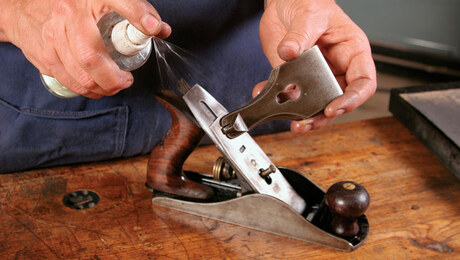
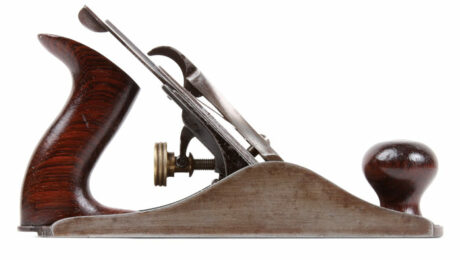
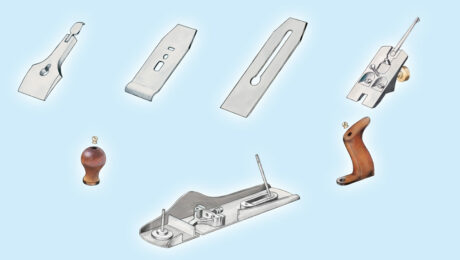
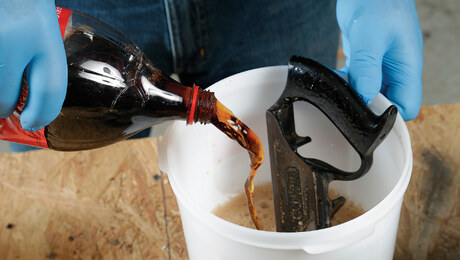
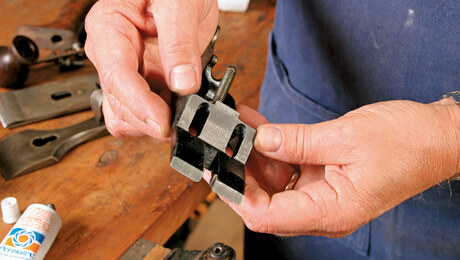
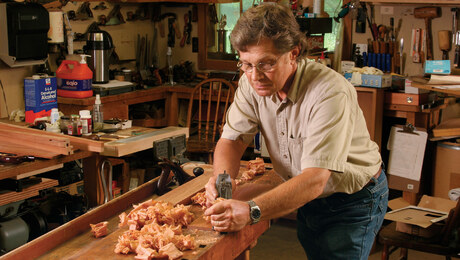
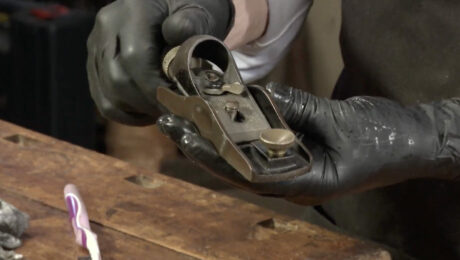
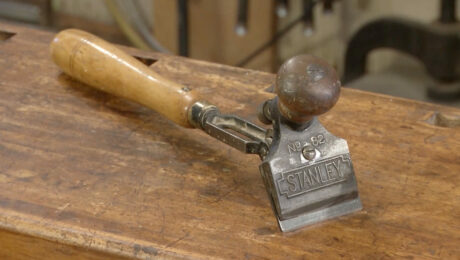






Comments
Great series; thanks Roland! A comment; the text intro to episode 3 seems to be missing some words at the end? "There are other, more concentrated forms of phosphoric acid. Naval jelly, which I used to use to derust tools, contains a much higher percentage of phosphoric acid than cola, so it’s more.." - care to finish the sentence or paragraph?! Thanks!
Oops! Doing too many things at once! That's what I get for not having someone check my work too!
Yeah, been there .. done that too :) Thx!
Roland, really enjoying these. Thank you.
Great video. Looking forward to more.
Not loving the ads, though. This is the second toilet-related ad I've seen for this series. This one was apparently prompted by the word "Cola" in the article text and a search I did several weeks ago for a replacement fill valve. Not sure this association is helping the FW brand. Can't I pay more for an ad-free experience?
Can't wait to see where this is going. I recently repaired a tote using wood glue because I really need to use the plane and didn't have epoxy handy. It held, but did not fill gaps well. Now I am thinking about attempting to break it apart and then glue it again using epoxy. Would that present a problem do you think? Also, why 5-min epoxy rather than the long-setting standard stuff? Thanks Roland!
No problem, simply clean off as much of the glue as possible and then reset with the epoxy. The epoxy will bind to the glue residue as well as the wood.Five minute epoxy has more than adequate strength for this purpose.
Roland, great series. And Very timely as I am in the process of restoring a number of vintage stanleys! I've been soaking the metal parts in Evapo-Rust for several days, and I have had good success with it. Would you recommend cola over Evapo-rust? Are the advantages/disadvantages to be aware of? Thanks!
I'm not sure Roland participates in the forum here. This series was recorded several years ago. (http://www.tauntonworkshops.com/course/rebuilding-vintage-hand-planes).
The "Hand Plane Building, Restoring and Collecting" group on Facebook (see ep 1 comments by JPdOrleans - https://www.facebook.com/groups/1410047249324398/ - 37k members) is very active and has lots of discussion about rust removal.
Depends on your desired results. Cola is slow but leaves all the patina, Evaporust is quick but does change the color of the iron.
Any rust remover, cola, vinegar or Evaporust work better/faster if you degrease first so the acids can get to the rust.
I soak and scrub in hot water and degreaser (Simple Green, Purple Power or Awsome to remove oil and grease a half hour and scrub brush are all you need.
Rollie, have to wonder although I've never tried it myself simply sandblast the rusty parts in a sandblasting cabinet, seems logical to me vs all the chemicals, mess and home made remedies?
Great series. I've restored many planes using Evaporust but of course you lose the patina. You have to make sure the parts are totally immersed or it will leave a line where the Evaporust didn't touch it. Plastic parts bins work well for soaking the parts. The larger ones will hold up to a #6. I might try the cola method next time. If I might offer a suggestion: a waxed dowel through the middle of the tote might help with alignment so you can concentrate on the clamping.
Great series - learned a lot but have one question that has nagged me for decades. For a bevel down plane, the cutting angle is set by the angle of the frog, not the bevel angle of the blade. However, Mr. Johnson is adamant that a 25 degree bevel is the optimal and I don't understand how this assertions can be correct. As long as the bevel angle is less than the frog angle, it should matter only to the extent that bevel angle does impact cutting edge strength. I've used both 25 and 30 degrees and honestly can't detect any difference in either plane performance or surface quality. Would love to hear an explanation for why (or if) I'm wrong.
Log in or become a member to post a comment.
Sign up Log in